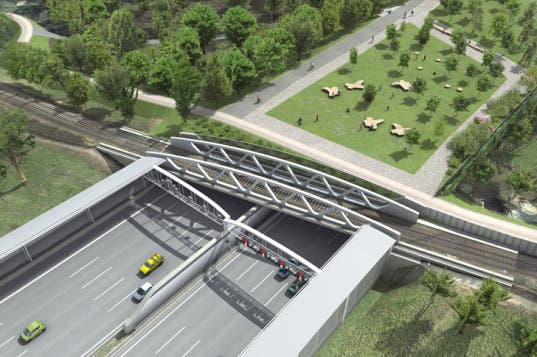Three public parks will cover an Autobahn (highway) that passes through the city of Hamburg, in Germany. The 8,000-mile road network runs through Hamburg’s city center, dividing the city into an eastern and western half and creating a lot of disturbing noise. The problem will be solve through the addition of the green spaces.
The highway causes two main problems – first of all, it breaks the city’s continuity for pedestrians, and second of all, it creates a lot of pollution (dust, dirt, air pollution and noise pollution). As part of an effort to green the city, Hamburg will will build covers on three separate sections of the Autobahn. This will allow pedestrians not only to cross the street and be rid of most of the noise and air pollution, but also enjoy some new parks.
Hamburg is currently working on a plan that would eliminate the need for cars within the next 15-20 years, creating one of the most eco friendly and healthiest cities in the world. The city is working on a green network which will allow people on foot or riding a bike to access all the routes in the city. The Guardian explains:
“[Hamburg] envisions a network that doesn’t just help residents get from point A to point B in a sustainable fashion,” with city spokesperson Angelika Fritsch adding “It will offer people opportunities to hike, swim, do water sports, enjoy picnics and restaurants, experience calm and watch nature and wildlife right in the city. That reduces the need to take the car for weekend outings outside the city.”
These parks ontop of the highway will be embedded into the green network. The redesign will cover 3 km (2 miles) of the Autobahn, giving 60 acres (0.2 square km) of new green space back to the people of Hamburg. There is also an economic upside to this (aside for improving life quality) – the German government projects about 2,000 new homes can be built around the parkland.
What do you think about this initiative?











